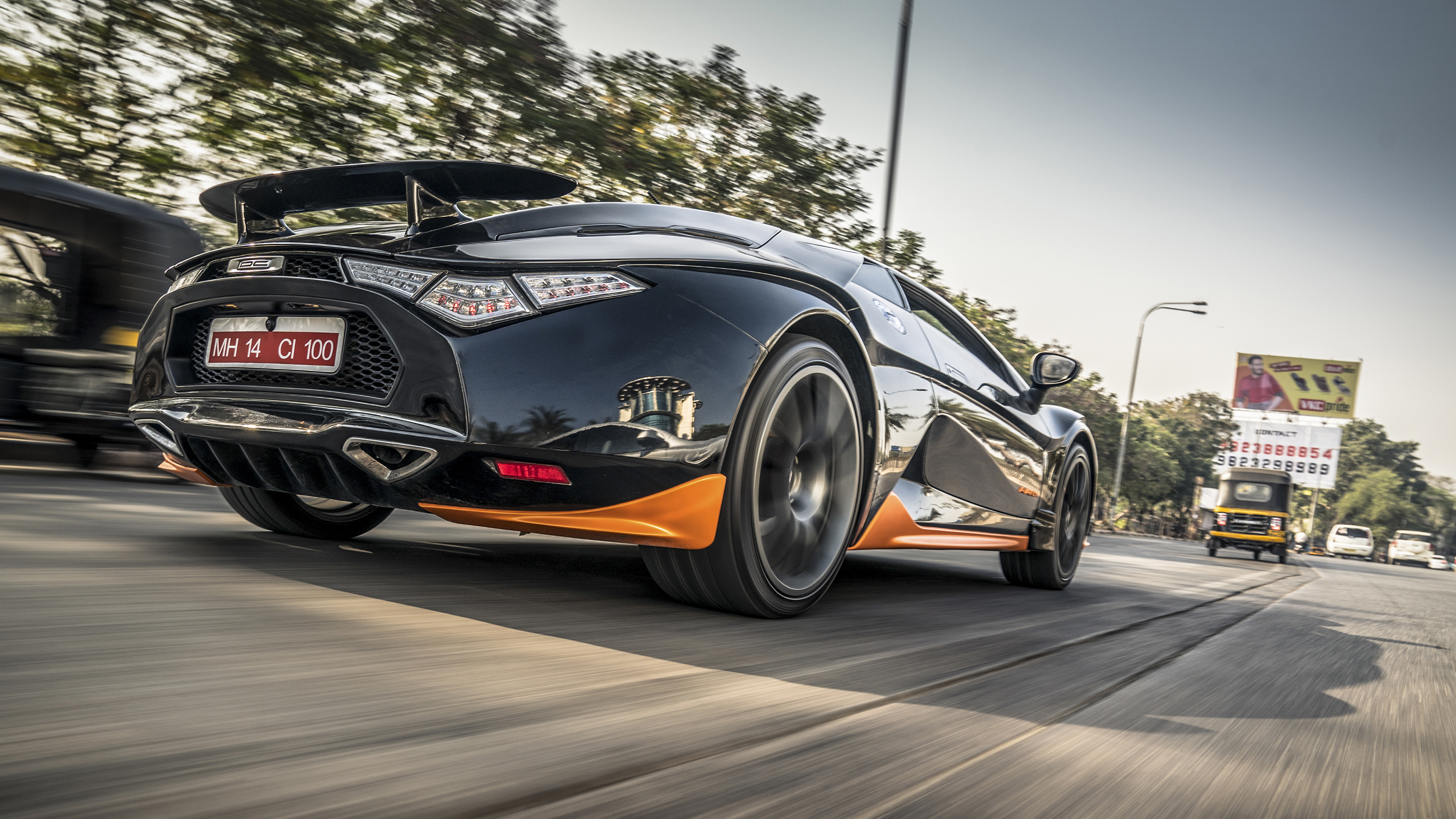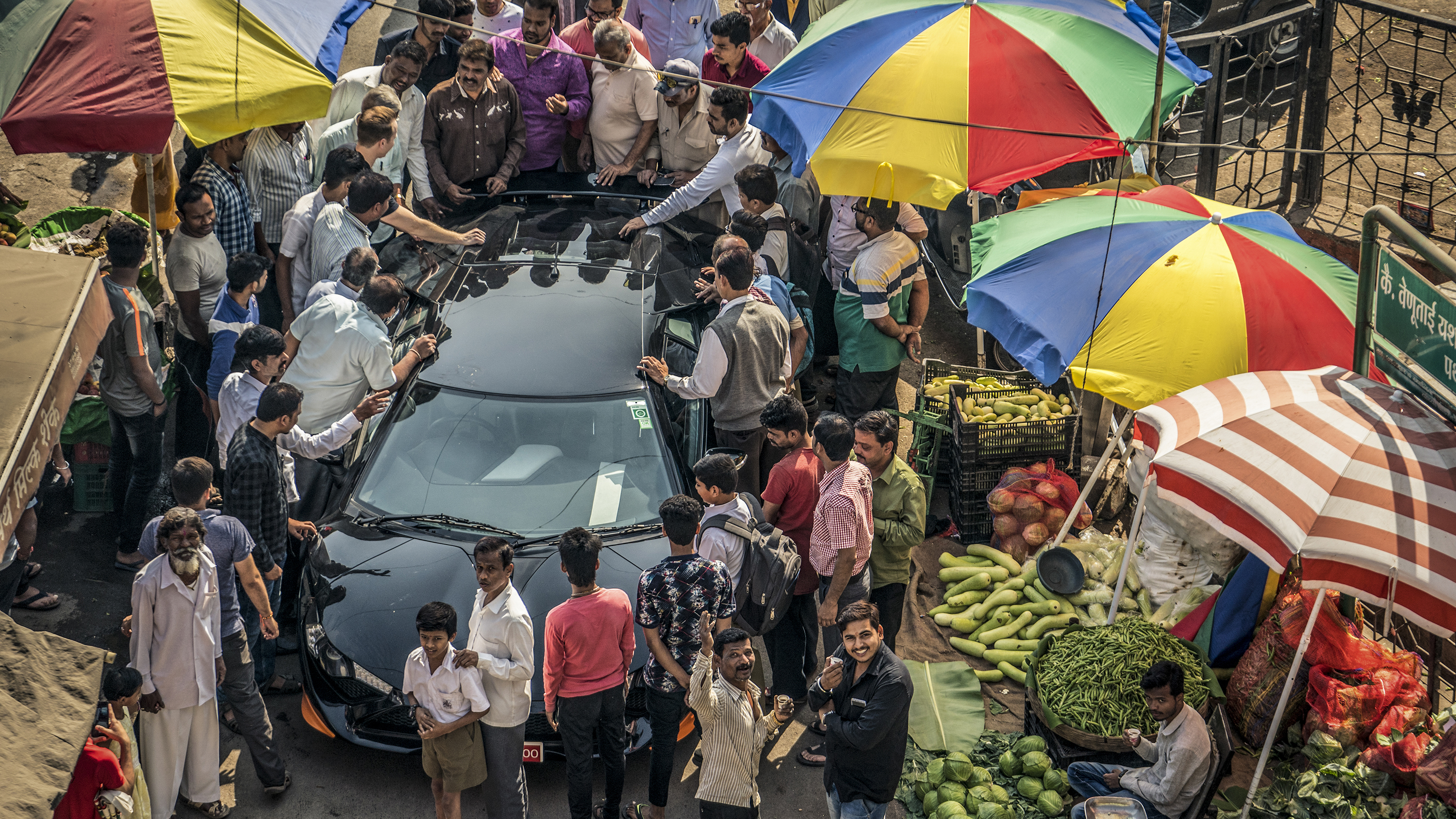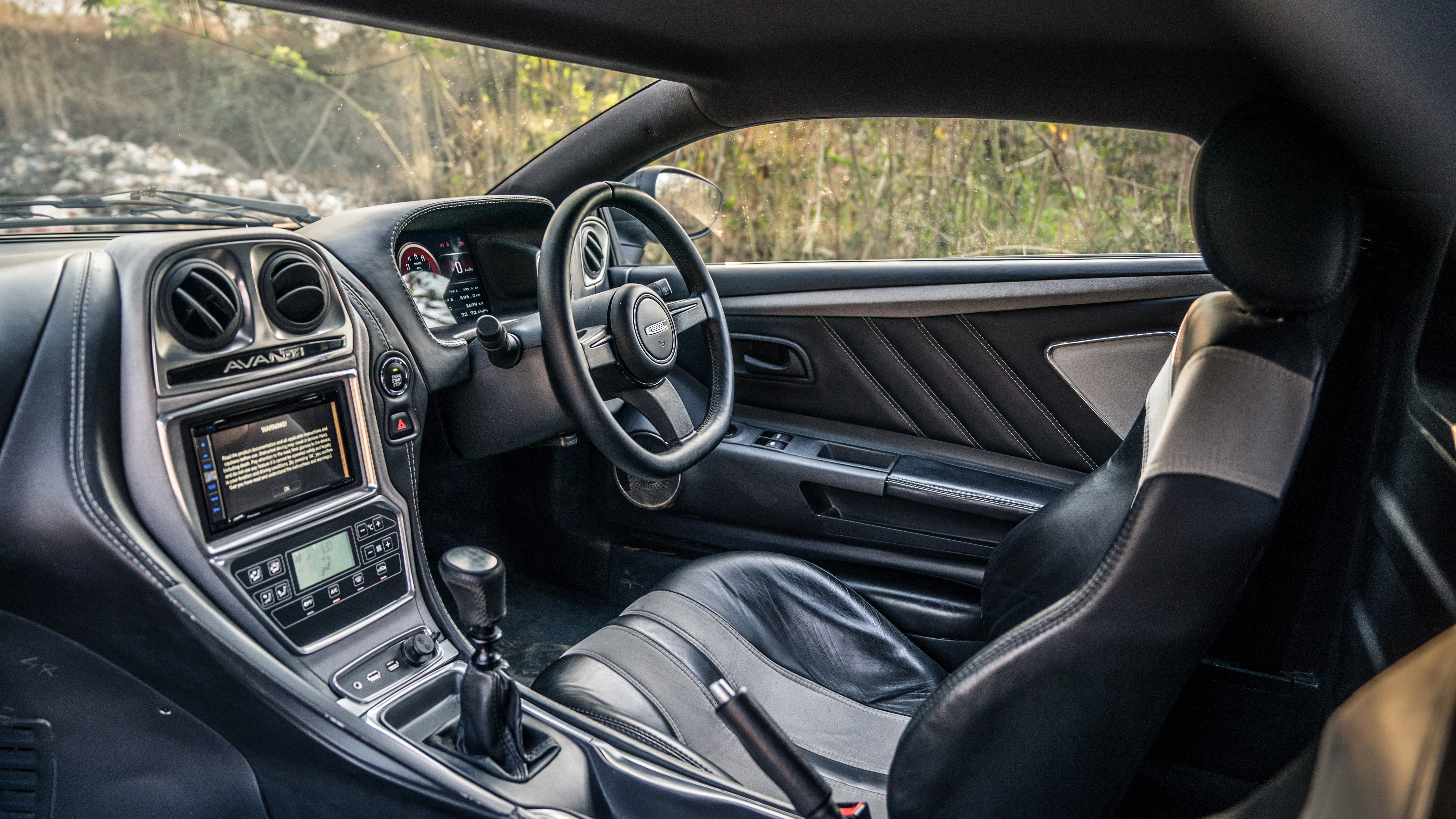
Bombay bad boy: driving India's supercar
The DC Avanti mixes Veyron (ish) looks and Megane RS power. Time to hit the Indian streets
It’s a brand of stress I’m quite unfamiliar with. A kind that starts in your toes and bubbles up through your body until your skin’s itching on the inside, veins emerge from strange places on your face and your bowels play the trumpet solo from Penny Lane.
The latter may have more to do with a particularly fiery murgh masala we ate last night, but either way, I’m surrounded by mayhem and quite fancy a good cry. Driving in India is a high anxiety activity at the best of times. Driving a supercar in India, it turns out, is marginally less relaxing than being stoned to death.
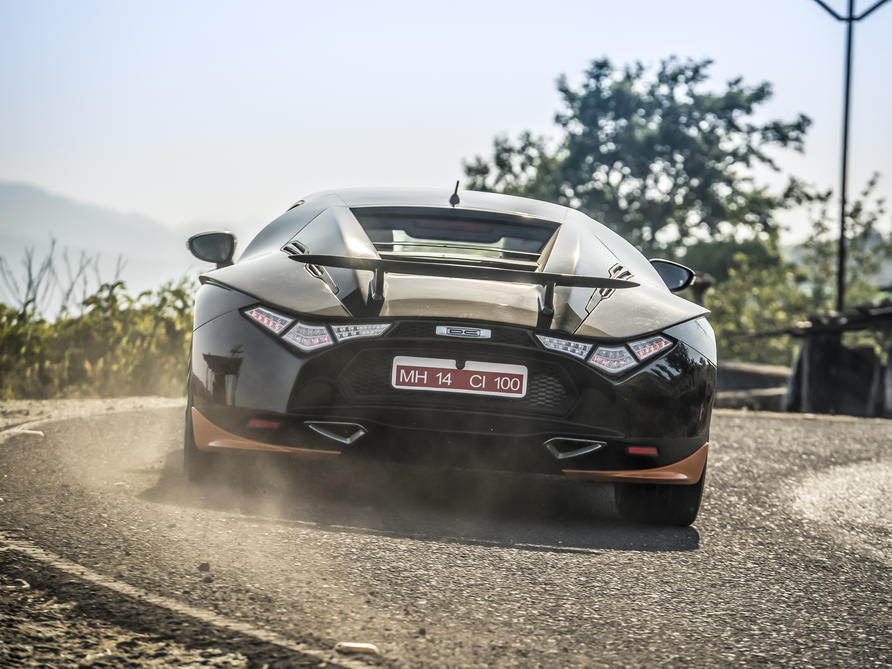
Words: Jack Rix // Images: Rowan Horncastle
If you’re anything like me, your buttocks will clench and your blood pressure will rise at the mere sight of a width restrictor in the UK. Here, it’s like trying to squeeze yourself between those spiteful metal posts... at all times.
Except replace metal posts with rickshaws, bikes, motorbikes, cows, goats, cars, more goats, people and market stalls, and you’re closer to the mark. It’s as if every road user, livestock included, has utter faith that a higher power has preordained their destiny. Junctions are a case of liberal application of horn, sticking your nose into the fire and then jumping in, regardless of what your eyes are telling you.
If there’s one crumb of comfort, it’s that I brought this on myself. If we’re going to drive India’s first mid-engined supercar, I thought, we need to experience this country properly, warts and all. This is why, despite Rowan’s well-grounded objections, I insist on heading to Tulshi Baug first, the busiest market in Pune, a city three hours east of Mumbai. Population, four million.
Back to the car. It’s called the DC Avanti and the work of Dilip Chhabria – designer and founder of DC Design – a company known for building concept cars and prototypes. And then one day he woke up and decided to put his own supercar into production. The man has balls. Truth be told, the Avanti was launched in India back in 2015, but as we rarely find ourselves in DC’s hometown, this is our first encounter.
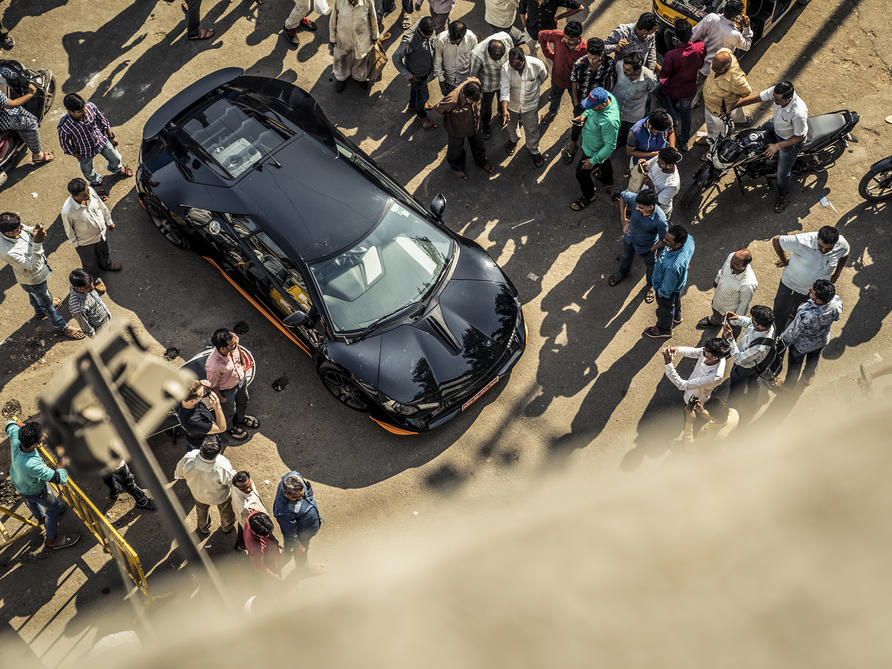
I know the rear looks like it’s been parked up against a radiator (and thus melted), the front end has a fish-like quality and the ride height is more SUV than supercar (all will be explained), but for sheer traffic-stopping drama it does the job, and then some. ‘Our’ car was fitted with the optional aero kit (complete with fixed rear wing that does wonders for lifting the saggy bottom) and painted in Veyron Super Sport black and orange. As the gentleman who walked into the middle of the road, pointed at us, and screamed “BUGATTI!” helpfully pointed out.
We’ve arrived at the market. Rowan is sprinting to the top floor of a multi-story car park for a bird’s eye view, and I’m being engulfed by a crowd of locals keen to see which Bollywood superstar is running low on courgettes. The sense of disappointment when a pasty stranger steps out is audible, but grumbles turn to cheers when I tell them the car is one of their own, built in this very city.
Before you boo our lack of sensitivity, there’s a purpose to us parading around what is not a wealthy part of town. The DC Avanti isn’t a car built for export to rich Western markets, it’s a supercar designed for the people of India and the road surfaces they have to endure. As a result it’s been developed, priced and reinforced accordingly.
The chassis, developed in-house, is a steel space frame with the emphasis on keeping things beefy rather than light – hence a 1,580kg kerb weight, despite carbon-fibre body panels. Ground clearance has also been prioritised... at a price. At five foot nine inches I am not a tall man and yet my hair is brushing the headlining. If you spot a tall person with a small, polished bald patch right on the top of their head, chances are they drive an Avanti. That’s the problem with raising the ride height to 170mm (just 30mm less than a Jaguar E-Pace SUV), but keeping the overall height to 1200mm (just 30mm taller than a Lamborghini Huracán).
Top Gear
Newsletter
Thank you for subscribing to our newsletter. Look out for your regular round-up of news, reviews and offers in your inbox.
Get all the latest news, reviews and exclusives, direct to your inbox.
Right now I’m in stitches watching Rowan sprint it around this market, sweating heavily, waving his camera about, liable to blow at any minute courtesy of the aforementioned murgh masala. At one point he leans out the window to take a shot, stomach folded over the window sill, and I notice his cheeks puff out with the unmistakeable look of a man that’s about to chunder. But he holds it in. I find this a little heroic.
Thinking about it now, the DC Avanti’s interior may have had something to do with it. You’ll like it, so long as you’re a fan of late nineties Korean hatchbacks. The build quality is flimsy in places, atrocious in others – notably the door handles, cut from the world’s thinnest gauge plastic, the spindly steering wheel and the Renault-sourced six-speed manual’s oddly long gear lever, which is a shame because the shift quality isn’t bad at all.
The seats are covered in leather of dubious origin, with more shiny coloured stripes stitched on top. The sat nav is an aftermarket plug-in job and the digital instrument cluster reminds me of a Sega Master System. But hey, there’s room for your elbows and the view out isn’t bad, although there’s no rear-view mirror on account of the vision-obscuring louvres on the engine cover. Strangely, I like that – proper supercar stuff.
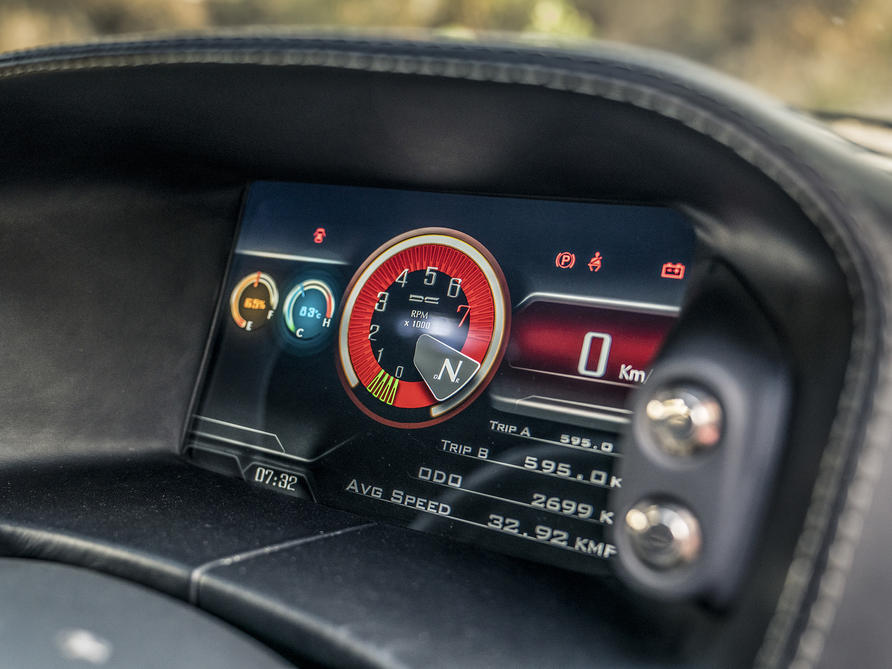
Speaking of which, we really ought to drive the DC in the manner intended, so we head east, towards a hilltop town called Lavasa. That, we’re told, is a land of infinity views and a road to really challenge the DC Avanti. As I bimble along Highway 57 at walking pace, weaving around and through potholes the size of Jacuzzis, I note 50 per cent of the description was accurate. If we were in a Huracán, bits of it would be everywhere. We wouldn’t make it 100 metres before beaching ourselves or buckling a wheel.
In the DC Avanti though, we plough on, without so much as scraping the chin on the floor. Through the worst of it, our speed picks up, and immediately we hit a concrete speed bump at 50mph and leave the road surface as my head ricochets off the roof. But the Avanti just shrugs it off and keeps on trucking. Honestly, swap the Pirelli P-Zeros and 20-inch rims for a set of Goodyear Wranglers, and you could take on the Dakar in this thing. Maybe.
At least the engine would be bullet-proof. No W16 quad turbo here - in the interests of keeping costs down, DC made the wise decision to buy in a 2.0-litre four-cylinder turbo from Renaultsport. Yep, the same engine as the old Megane RS, available in two states of tune: 250bhp and 310bhp, the latter available with an automated manual and paddles. We drove the 250bhp model, capable of 0-62mph in six seconds and a limited top speed of 124mph, which is plenty, given the Avanti has no airbags.
For something that looks so outrageous, there’s a disappointing lack of noise, save for some turbo whistle from behind your head. But the engine’s linear, smooth, torquey delivery is probably the best thing about the driving experience. It’s fast in a middling hot-hatch kind of way, but given the state of the roads and proximity of other traffic, speed isn’t high on your list of priorities.
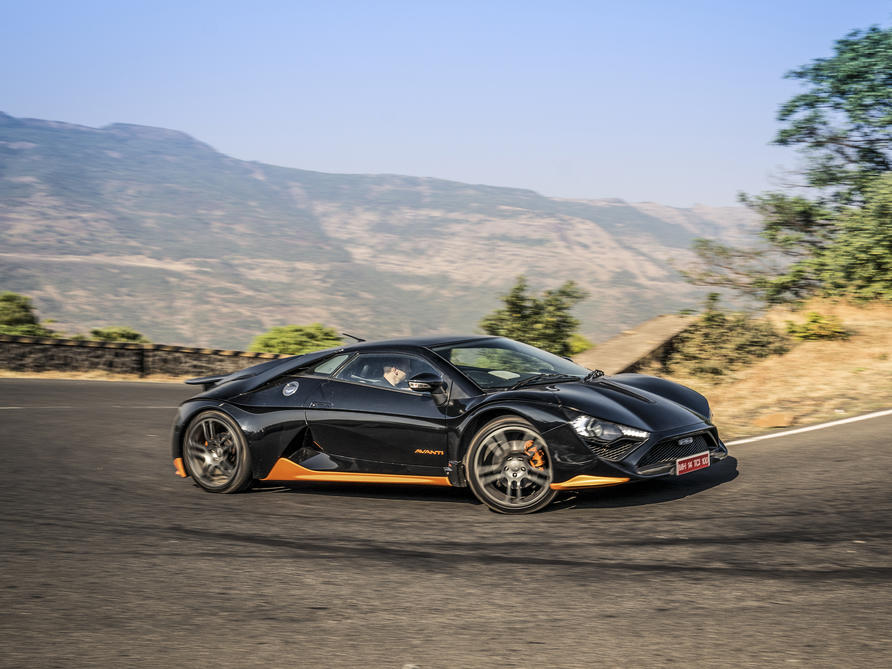
We’re climbing now, the road and views improving in direct proportion, and the car revealing a rush of new and disturbing personality traits. It certainly doesn’t brim with feedback and energy, it’s far more languid than that. There’s nothing wrong with the steering ratio, but the way it offers the same minimal resistance even as you add lock is… odd. As a result, you tend to add too much and lurch into corners causing the car to roll a lot initially, before it settles on its outside springs. You can unstick the rear tyres with a clumsy boot and a bung, but with body control so unpredictable, it’s probably wise to clear the area before doing so.
But what did we expect? Final-tenth driving dynamics aren’t what this car is even remotely about. It’s about combining spirited performance with an affordable price tag and genuinely heroic looks. I ponder this as we return to the city and creep along as the world swarms around us, missing by millimetres, grinning as they go.
I come to a conclusion Indians aren’t the world’s worst drivers, they’re actually the world’s best – constantly looking ahead, assessing, predicting, expecting the unexpected. It’s as if they have twice the number of cameras, radar and lidar wired into their brains as westerners, because that’s how they’ve evolved.
Live in India? You could be the proud owner of a DC Avanti from just Rs 37 lakh (£40,600), although there’s an extensive options list that includes such delights as a personalised car cover (£285), colour-coded door cards and centre console (£1,040) and matt paint (£3,300), so they tend to sell for £50,000-upwards. And not in tiny numbers, either: 350 have been sold so far and DC are currently assessing exporting it to certain markets. Address the rather glaring styling and quality issues and who knows – it could be the perfect antidote to the UK’s hastily declining roads.
Trending this week
- Car Review
BMW 1 Series







